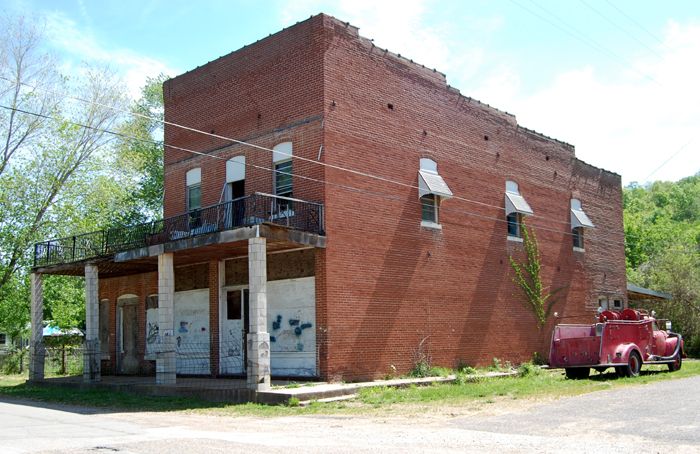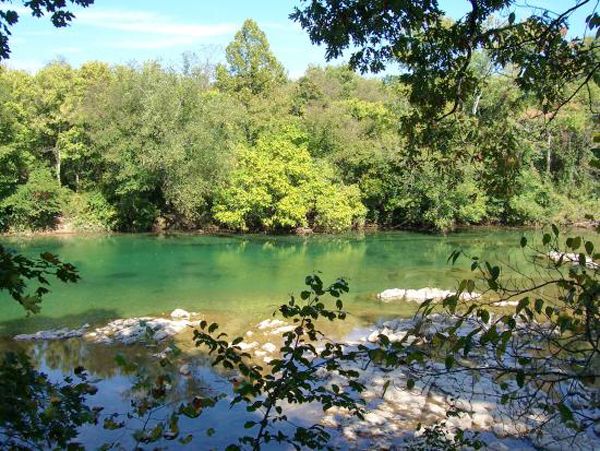
Mill Spring, Missouri: A Quiet Heartbeat in the Ozarks
In the undulating embrace of the Missouri Ozarks, where ancient hills ripple like a petrified ocean and the canopy of the Mark Twain National Forest stretches endlessly, lies a place that seems to exist just beyond the reach of the bustling modern world. This is Mill Spring, Missouri, a village so small its population barely registers a blip on the state’s demographic radar, yet one that holds a disproportionately large piece of the region’s natural beauty, history, and quiet, enduring spirit.
Mill Spring is not a town you stumble upon by accident; it’s a destination sought by those yearning for the solace of nature, the whisper of history, and the gentle rhythm of a life unhurried. Its very name, evocative of both industry and nature, hints at the dual forces that shaped its past and continue to define its present.
The Gushing Heart: Mill Spring Itself

At the literal and metaphorical heart of the community is Mill Spring, one of Missouri’s most significant natural springs. This colossal hydrological feature gushes forth an astonishing volume of water – often exceeding 80 million gallons per day – from the subterranean karst network of the Ozarks. The water, a startling sapphire blue in its deep pools, is crystal clear, perpetually cool, and a constant testament to the raw power and beauty of the natural world.
"It’s the lifeblood of this place," says Eleanor Vance, a local historian and lifelong resident, her voice soft but firm, as she gestures towards the spring’s churning basin. "Generations have drawn from it, played in it, worked by it. It’s more than just water; it’s our oldest story."
The spring’s output forms a significant tributary of the Black River, a beloved waterway renowned for its pristine conditions, excellent fishing, and opportunities for canoeing and kayaking. For visitors, the sight of such a powerful natural phenomenon is often awe-inspiring, a stark reminder of the planet’s geological wonders hidden in plain sight.
Echoes of Industry: The Mill and the Timber
The "Mill" in Mill Spring is not just a poetic flourish; it refers to the historical grist mill that once harnessed the spring’s immense power. In the late 19th and early 20th centuries, this mill was a vital hub, processing grain for farmers from miles around. Its presence transformed a mere settlement into a burgeoning community.
But the mill was just one component of Mill Spring’s early economic engine. The true boom came with the timber industry. The vast, virgin forests of the Ozarks, particularly the sturdy oak and pine, were a prized commodity. Logging camps sprang up, and the Black River became a crucial artery for floating logs downstream to larger markets. The arrival of the railroad further cemented Mill Spring’s role as a timber town, connecting its rich natural resources to the burgeoning industrial centers of the Midwest.
"My great-grandfather worked the logging camps, then on the railroad," shares Silas Boone, a retired forester whose family roots in the area stretch back five generations. He sits on his porch overlooking a patch of woods that were once clear-cut and are now reclaiming their ancient grandeur. "Those were hard times, but prosperous ones for the community. The trains brought people, goods, and hope. When the timber ran out, and the trains stopped coming as often, that’s when things started to change."
Indeed, like many small, resource-dependent towns across America, Mill Spring faced a significant downturn as its primary industries waned. The mill eventually ceased operations, the timber was largely harvested, and technological advancements reduced the need for the extensive railroad network. The vibrant, bustling community of a few hundred souls began to shrink, its young people moving to cities in search of better economic opportunities.

A Community Forged in Resilience
Today, Mill Spring is a picture of quiet endurance. The population hovers around 100 residents, a tight-knit community where everyone knows everyone, and a helping hand is never far away. The general store, often serving as the unofficial town hall, buzzes with the gentle hum of daily greetings and local news. Children still play in the clear, cold waters of the spring run, much as their ancestors did.
"We might be small, but we’re mighty in spirit," says Mary Beth Thompson, who runs the Mill Spring Mercantile, a charming hodgepodge of essentials, local crafts, and hearty sandwiches. "It’s not about what we don’t have; it’s about what we do. We have community. We have nature. We have peace." Her words echo a sentiment common among the residents: a deep appreciation for the quality of life their rural setting affords, despite its challenges.
One of those challenges is economic. With limited local employment beyond a few small businesses and agricultural pursuits, many residents commute to larger towns for work. The aging population is another concern, as fewer young families choose to settle in the area. Yet, there’s a discernible undercurrent of resilience, a quiet determination to preserve their heritage and adapt to the times.
Local initiatives, often spearheaded by dedicated volunteers like Eleanor Vance, focus on documenting the town’s history, maintaining its few public spaces, and subtly promoting its natural attractions. There’s a nascent understanding that Mill Spring’s future might lie not in industrial revival, but in embracing its identity as a haven for nature lovers and those seeking a slower pace of life.
An Outdoor Enthusiast’s Paradise
The true draw of Mill Spring, beyond its charming community, lies in its unparalleled natural surroundings. The village serves as a gateway to the Mark Twain National Forest, an expansive wilderness offering endless opportunities for outdoor adventure. Miles of hiking trails wind through ancient forests, leading to hidden waterfalls, panoramic vistas, and serene clearings perfect for picnicking or contemplation.
The Black River, with its gentle currents and abundant aquatic life, is a paddler’s dream. Kayakers and canoers glide along its surface, often spotting deer drinking at the banks, great blue herons stalking their prey, and bald eagles soaring overhead. Fishing, particularly for smallmouth bass and various panfish, is a popular pastime, drawing anglers from across the state. The spring itself, with its deep, clear pools, offers unique snorkeling and diving experiences for the adventurous, revealing an underwater world of intricate rock formations and darting fish.
"You can lose yourself out here, in the best possible way," says Sarah Miller, a photographer from St. Louis who regularly visits Mill Spring for weekend escapes. "The air smells cleaner, the stars are brighter, and the only sound you hear is the river or the wind through the trees. It’s a reset button for the soul."
Looking to the Future: Preserving the Quiet Charm
Mill Spring faces the perennial question of how to move forward without sacrificing the very essence that makes it special. There’s a delicate balance to be struck between attracting visitors and preserving the quiet, unspoiled nature that defines the area. Residents are wary of over-commercialization but understand the need for sustainable growth.
Discussions often revolve around modest improvements to infrastructure, subtle promotion of local businesses, and continued efforts to maintain the natural beauty of the spring and river. The hope is to draw visitors who appreciate the authenticity and tranquility of the Ozarks, rather than those seeking loud attractions or crowded resorts.
Mill Spring, Missouri, remains a testament to the enduring power of nature and the resilience of a small community. It’s a place where time seems to flow not in hurried seconds, but in the steady, ceaseless gush of its namesake spring. It reminds us that true wealth isn’t always measured in dollars or skyscrapers, but in clean water, ancient forests, and the quiet, unwavering heartbeat of a place that refuses to be forgotten. For those willing to seek it out, Mill Spring offers a profound connection to the past, a vibrant present, and a promise of enduring natural beauty for generations to come.


